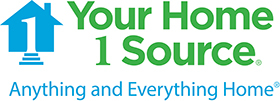
From the Football Field to your Front Lawn
Part of the quintessential American dream seems to always include an expansive green lawn where our kids and pets can play out in the sunshine and fresh air. It sounds idyllic, but as homeowners quickly realize, maintenance of a lawn can be costly, time-consuming and even frustrating. While outsourcing the lawn maintenance is sometimes an option, many homeowners prefer to do it themselves to avoid the extra expense. With the inherent costs of watering and fertilizing, (especially in drought-prone areas of the country), that dream lawn ends up draining our house maintenance budget and a lot of our precious free time.
Thankfully, there are alternatives to the "American dream lawn" that virtually eliminate lawn maintenance and can significantly reduce costs. The question is: does your grass have to be real?
Not just AstroTurf anymore.
While artificial turf has been used in commercial and institutional athletic spaces for decades, you might have noticed that its use in residential spaces is becoming more common. As a viable option for homeowners who seek low-maintenance, artificial turf is an always-green lawn. What has changed to make it more appealing for residential use, and not just for athletic arenas?
One change is price. Prices for artificial turf have come down while the quality has gone up. Especially for residential artificial grass, prices have become more reasonable — some quotes are as low as $2.50 per square foot for DIYers. The professional installation of synthetic grass will have a higher upfront cost but according to Jay Johnston, owner of Synlawn Georgia, investing in a professional installation is well worth the extra investment. "With every new customer, we come to the property to assess their lawn and help them choose the best product for their site, based on its location, size, usage and amount of shade. Then there’s a four-step preparation process that can be labor intensive for a DIYer. Having a professional installation from a company like Synlawn ensures the job is going to be done right the first time, and the lawn is going to look great for a long time."
The price for synthetic grass varies widely based on your geographic region, lawn size, site requirements, etc. However, when you consider all the costs incurred for lawn care over a period of three to five years — water, fertilizers, herbicides, and equipment — the cost for artificial turf installation is comparable, considering the “lifespan” of artificial turf can extend to 20 years! In fact, Synlawn guarantees its products for 15 years!
But does it look real?
Other changes in synthetic grass are its quality and variety. Since the 1970s when athletic teams began using artificial turf for its durability and consistency, turf companies have continued to make advances in developing different turf styles, colors, designing different blade shapes and lengths that are more appealing for residential use. Most artificial turf companies now offer a variety of artificial grasses, based on how you plan to use it. Artificial turf is safe for animals and children, although some types can retain heat more readily than real grass; in direct sunlight it can be 5-10+ degrees hotter than regular grass. That might be due to the artificial turf’s composition — grasses that are 100 percent synthetic tend to retain heat more than grasses that are made with both synthetic and organic materials. Several of Synlawn’s most popular synthetic grasses are only partially synthetic; their latest product is a turf made up of nylon and sugarcane, and their most popular turf is 78% soybean. While artificial turf can last more than a decade, it does fade and wear out over time.
Ready to stop mowing forever?
One of the main reasons that homeowners choose to install artificial turf is that it is incredibly low maintenance. Besides the cost of installation, homeowners with artificial grass no longer need to pay for watering, fertilizing, pest control and regular maintenance. Once installed, artificial grass requires very little — no watering, no mowing. It drains as well as real grass, and can be hosed down or blown to be cleared.
Does it make sense for my lawn?
There are several factors besides cost to consider when "going artificial": lawn size, geographical location, and usage. Many artificial turf companies like Synlawn have a variety of different styles of synthetic grass that varies in length, color, blade shape and composition. A potential customer of artificial turf should consider each of these factors, in addition to the environmental considerations of installing a synthetic lawn.
How will it affect the environment?
While the use of artificial turf does conserve on costs of irrigation and maintenance (saving precious water resources and cutting down on noise and air pollution from mowers and weed-eaters), the synthetic material becomes an inorganic barrier between the soil underneath and the air above. That means birds like robins cannot access potential food like insects and worms that live in the soil. And let’s not forget what we learned about photosynthesis in ninth-grade biology: live plants like grasses pull carbon dioxide from the atmosphere where it converts it into two gases; releasing oxygen into the air and carbon that becomes part of the plant and enriches the soil. It’s worth noting that in the areas where artificial turf is laid, that life cycle is not happening. Areas where synthetic grass is laid can take years of soil remediation to "bring it back to life." So if you’re the type who likes to renovate and change things up every few years, artificial turf might not be a worthy investment. That said, if the idea of a virtually maintenance-free, eternally green lawn sounds appealing to you, perhaps it’s time to consider "going artificial."
